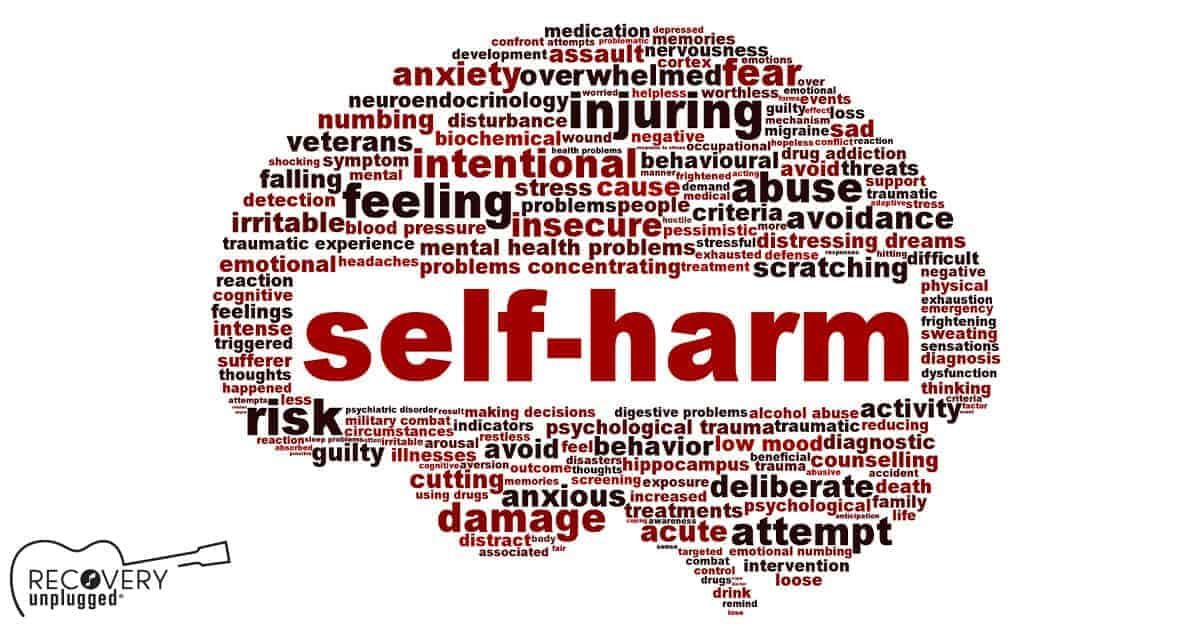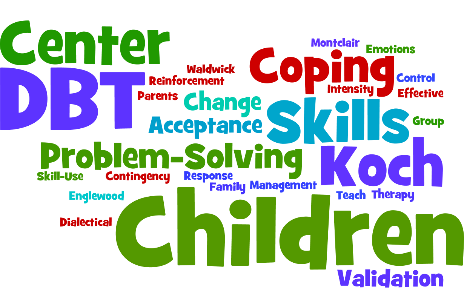In an ideal world, a teenager will grow up living with their biological parents, is happy, self-regulated and living a care-free, stress-free lifestyle. But, as everyone knows, the world is not ideal. What pushes a child from being care-free and happy to self-harming and contemplating completing suicide?
For parents, legal guardians and caregivers, there are often warning signs indicating your child may be entering into a dangerous situation. If your child has a change in clothing styles, friends, music or experiences mood swings or possibly noticing the child with a cut on their arm here and there may indicate the child is considering harming themselves.

‘There are a number of things that contribute to a client getting to the point that they are engaging in high risk behaviors such as self-harm and suicidal behaviors,” wrote Child and Adolescent Behavioral Health (C&A) Dialectical Behavioral Therapy (DBT) Program Manager Stacey Pancher Rippey. “Such behaviors are most commonly the result of feelings of sadness/depression, distress, anxiety or confusion. Teenagers have unique challenges that stem from the teen culture and the increasing stressors associated with social media. In recent months, there has also been a huge shift in their lives with the rise of the COVID pandemic which has resulted in increased isolation and constant uncertainties, which is further effecting the social and emotional health of youth.”
For parents who are noticing these tendencies in their child, help is available through C&A’s DBT Group sessions.
Pancher Rippey said clients are usually referred to the DBT Group through their C&A provider. We also welcome referrals from outside our agency. “If a referral is made from outside the agency, the client must receive an intake assessment with a C&A assessor, which would provide background about the client’s symptoms as well as document medical necessity for the service. The C&A assessor then refers the client to DBT group. The client must be working with an individual therapist to be referred to and participate in DBT group as this is a vital part of the treatment model.”
A typical DBT Group consists of no more than eight participants. The DBT group runs three days a week for three hours each day and generally runs for four weeks. Youth ages 13 and up are appropriate for the group, with the oldest group members being around age 20. Groups sessions are run at C&A’s Plain office and the agency is seeking to start a group at our Alliance location.
WHAT DOES A DBT GROUP SESSION LOOK AND FEEL LIKE?
If your child is placed in a DBT Group, what will the experience be like? Every group session is different based on the age of the participants, the number of participants and if participants are male or female, but what doesn’t change is the skills that are learned and emotions that are shared. Pancher Rippey provided insight on a session.

- Participants are encouraged to focus on their strengths and to identify areas with which they struggle.
- Participants are discouraged from sharing any intense emotional experiences that would include cutting and suicide attempts to prevent members of the group from being overwhelmed or traumatized.
- Participants sharing suicidal tendencies may trigger other groups members who are struggling with urges to self-harm or attempt suicide themselves.
- Group members who have a desire to discuss such incidents of self-harm or suicidal behaviors are encouraged to discuss this with their individual clinician.
- The DBT Group lead will maintain contact with client’s individual therapist to make sure that any such needs or concerns are addressed in individual treatment.
WHAT SKILLS WILL YOUR TEENAGER LEARN?
If your child is part of a DBT group, what skills will he/she learn to help them foster resiliency skills to help cope with life’s challenges? Participants in the group report having few, if any close or trusting relationships, they often feel alone and misunderstood by others and feel that they have no support as a result of their inability to appropriately manage their emotions. The child’s difficulty with appropriately communicating with others and often acting out these emotions often leads to further feelings of isolation and distress.

- Participants will learn about distress tolerance and mindfulness to encourage more healthy ways of coping with intense emotions and to encourage more positive ways of outwardly responding to the world around them as a result of such intense emotions.
- Participants in group allow group members to feel connected and understood as the group offers the opportunity for these clients to come together and see that others are having similar experiences.
- Participants like the experience of being able to meet and share struggles with others like themselves and indicate that it decreases feelings of loneliness and isolation.
- Participants are encouraged to share how they are using their DBT skills outside of group sessions and how they are experiencing success in doing so.
- Participants are also able to engage in processing with the group around difficulties they are having with using these skills as well as to problem solve with fellow group members around how to overcome these difficulties.
- Participants can provide meaningful encouragement and also serve as role models in demonstrating positive change based on their use of learned skills.
The client’s individual therapist will follow up with the client regarding skills they are learning in DBT group. The role of the individual therapist is to encourage and reinforce the continued use of these skills throughout the clients group experience and beyond.
WHAT HAPPENS AT THE END OF THE GROUP SESSION?
At the completion of group, each group member is to have the tools that they need to be to successfully manage emotions in a way that is safe as well as in ways that are socially acceptable, including the ability to communicate in an effective way with others to get their needs met.
Pancher Rippey said due to the intensity of the group itself and the amount of material that is covered as well as the severity of symptoms being treated, some group members who continue to struggle with symptoms, are encouraged to return for a second round of DBT Group. Group members who are able to repeat the group a second time, demonstrate a better mastery of the skills and are able to more thoroughly absorb material that they may not have fully grasped the first time around.
A PARENT’S ROLE?
Parents are encouraged to communicate with the group leader about any concerns that they or the client may have as the client is attending group. Parents are encouraged to attend the final group session to get a snapshot of what their child has learned during their participation in DBT Group and so that they can actively encourage skill utilization at home and become more active in their child’s treatment.
If you suspect your child is experiencing self-harming or suicidal ideations, please contact C&A’s Stacey Pancher Rippey at 330-470-4061. C&A’s DBT Group is run by staff member Jordan Kester and Kayla Johnson.

RECENT POSTS












